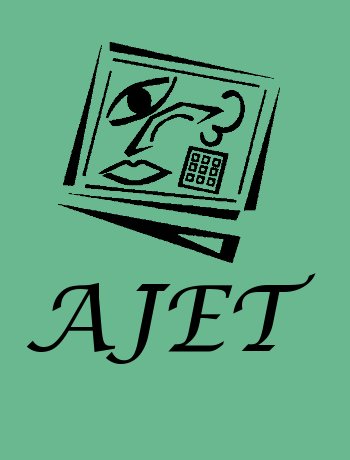
Interactivity with the interactive whiteboard in traditional and innovative primary schools: An exploratory study
ARTICLE
Sandra de Koster, VU University Amsterdam ; Monique Volman, Els Kuiper, University of Amsterdam
Australasian Journal of Educational Technology Volume 29, Number 4, ISSN 0814-673X Publisher: Australasian Society for Computers in Learning in Tertiary Education
Abstract
One of the main affordances of the interactive whiteboard (IWB) is its potential for increasing classroom interactivity, yet little is known about the interactivity it supports in schools with different educational concepts. In this study we analysed what types of whole-class interactivity the IWB supports in schools with either a traditional or an innovative school concept. Interactivity was operationalized in terms of operation of the IWB, control of the IWB content, and the whole-class dialogue. A cross-case analysis of videotaped lesson observations revealed patterns in the interactivity related to school type. Comparison of the prevalent interactivity patterns at the two school types shows that students at the innovative schools had a more active role in the content of the IWB-supported lessons than those at the traditional schools. The students at the traditional schools operated the IWB more often, which coincided, however, with little or no student control of the IWB content and with whole-class dialogue that focused on knowledge transmission. At the innovative schools the active student role regarding lesson content did not coincide with student operation of the IWB. These findings indicate a link between the school's educational concept and the type of interactivity in IWB-supported lessons.
Citation
de Koster, S., Volman, M. & Kuiper, E. (2013). Interactivity with the interactive whiteboard in traditional and innovative primary schools: An exploratory study. Australasian Journal of Educational Technology, 29(4),. Australasian Society for Computers in Learning in Tertiary Education. Retrieved August 5, 2024 from https://www.learntechlib.org/p/148116/.
References
View References & Citations Map- Beauchamp, G., & Kennewell, S. (2010). Interactivity in the classroom and its impact on learning. Computers& Education, 54, 759-766.
- Berry, M. (1981). Systemic linguistics and discourse analysis: A multi-layered approach to exchange structure. In M. Coulthard & M. Montgomery (Eds.), Studies in discourse analysis. London: Routledge & Kegan Paul.
- Cutrim Schmid, E. (2008). Potential pedagogical benefits and drawbacks of multimedia use in the English language classroom equipped with interactive whiteboard technology. Computers& Education, 51, 1553-1568. Retrieved from http://dx.doi.org/10.1016/J.compedu.2008.02.005
- De Koster, S., Kuiper, E., & Volman, M. (2012). Concept-guided development of ICT use in ‘traditional’ and ‘innovative’ primary schools: what types of ICT use do schools develop? Journal of Computer Assisted Learning. 28(5), 454-464. Doi:10.1111/J.1365-2729.2011.00452.x
- Evans, C., & Gibbons, N.J. (2007). The interactivity effect in multimedia learning. Computers& Education, 49, 1147-1160. Doi:10.1016/J.compedu.2006.01.008
- Gillen, J., Kleine Staarman, J., Littleton, K., Mercer, N., & Twiner, A. (2007). A 'learning revolution'? Investigating pedagogic practice around interactive whiteboards in British primary classrooms. Learning, Media and Technology, 32(3), 243-256. Doi:10.1080/17439880701511099
- Glover, D., Miller, D., Averis, D., & Door, V. (2005). The interactive whiteboard: A literature survey. Technology, Pedagogy and Education, 14(2), 155-170. Doi:10.1080/14759390500200199
- Graneheim, U.H., & Lundman, B. (2004). Qualitative content analysis in nursing research: Concepts, procedures and measures to achieve trustworthiness. Nurse Education Today, 24, 105-112.
- Haldane, M. (2007). Interactivity and the digital whiteboard: weaving the fabric of learning. Learning, Media and Technology, 32(3), 257-270. Doi:10.1080/17439880701511107
- Hennessy, S., Deaney, R., Ruthven, K., & Winterbottom, M. (2007). Pedagogical strategies for using the interactive whiteboard to foster learner participation in school science. Learning, Media and Technology, 32(3), 283-301.
- Jonassen, D. (1992). Objectivism versus constructivism: do we need a new philosophical paradigm? Education Technology Research and Development, 39, 5-14. Doi:10.1007/BF02296434493
- Kennewell, S., Tanner, H., Jones, S., & Beauchamp, G. (2008). Analysing the use of interactive technology to implement interactive teaching. Journal of Computer Assisted Learning, 24, 61-73.
- Mayer, R.E. (2001). Multimedia learning. Cambridge University Press.
- Miles, B.M., & Huberman, A.M. (1994). Qualitative data analysis. Thousand Oaks, CA: Sage.
- Moss, G., Carrey, J., Levaaic, R., Armstrong, V., Cardini, A., & Castle, F. (2007). The interactive whiteboards, pedagogy and pupil performance evaluation: An evaluation of the schools whiteboard expansion (SWE) project: London Challenge. Institute of Education: University of London. Retrieved from https://www.education.gov.uk/publications/eOrderingDownload/RR816%20Report.pdf
- Mroz, M.A., Smith, F., & Hardman, F. (2000). The discourse of the literacy hour. Cambridge Journal of Education, 30, 379-390.
- Nassaji, H., & Wells, G. (2000). What's the use of 'triadic dialogue'? An investigation of teacher-student interaction. Applied Linguistics, 21(3), 376-406.
- Niederhauser, D.S., & Stoddart, T. (2001). Teachers' instructional perspectives and use of educational software. Teaching and Teacher Education, 17(1), 15-31. Doi:10.1016/S0742-051X(00)00036-6
- Rogoff, B. (1994). Developing understanding of the idea of communities of learners. Mind, Culture and Activity, 1(4), 209-229.
- Slay, H., Siebörger, I., Hodgkinson-Williams, C. (2008). Interactive whiteboards: Real beauty or just "lipstick"? Computers& Education, 51, 1321–1341. Doi:10.1016/J.compedu.2007.12.006
- Smith, H.J., Higgins, S., Wall, K., & Miller, J. (2005). Interactive whiteboards: boon or bandwagon? A critical review of the literature. Journal of Computer Assisted Learning, 21, 91-101.
- Somyürek, S., Atasoy, B., & Özdemir, S. (2009). Board's IQ: What makes a board smart? Computers& Education, 53, 368–374. Doi:10.1016/J.compedu.2009.02.012
- Tolmie, A. (2001). Examining learning in relation to the contexts of use of ICT. Journal of Computer Assisted Learning, 17, 235-241.
- Torff, B., & Tirotta, R. (2010). Interactive whiteboards produce small gains in elementary students' selfreported motivation in mathematics. Computers& Education, 54(2), 379-383.
- Winzenried, A., Dalgarno, B., & Tinkler, J. (2010). The interactive whiteboard: A transitional technology supporting diverse teaching practices. Australasian Journal of Educational Technology, 26(4), 534552.
- Zhao Y., Pugh K., Sheldon S., & Byers J.L. (2002). Conditions for classroom technology innovations. Teachers College Record, 104, 482–515.
These references have been extracted automatically and may have some errors. Signed in users can suggest corrections to these mistakes.
Suggest Corrections to References